
How to Roast a Turkey

 12 portions
12 portions 120m
120mA simple and delicious holiday turkey. Brining adds a little bit of complexity to the process, but it's totally worth it.
What you will need
1 gallon Water
1 stick of Cinnamon
4 Bay Leaves
1 tsp Cloves
1 Tbsp Black Peppercorns
1 cup Salt
1/2 cup Brown Sugar
1 Whole Turkey
1 stick Unsalted Butter
(Nutritional facts 232 calories, 21.96 g fat, 1.27 g carbohydrates, 7 g protein, 68 mg cholesterol, 1171 mg sodium)How to cook
1

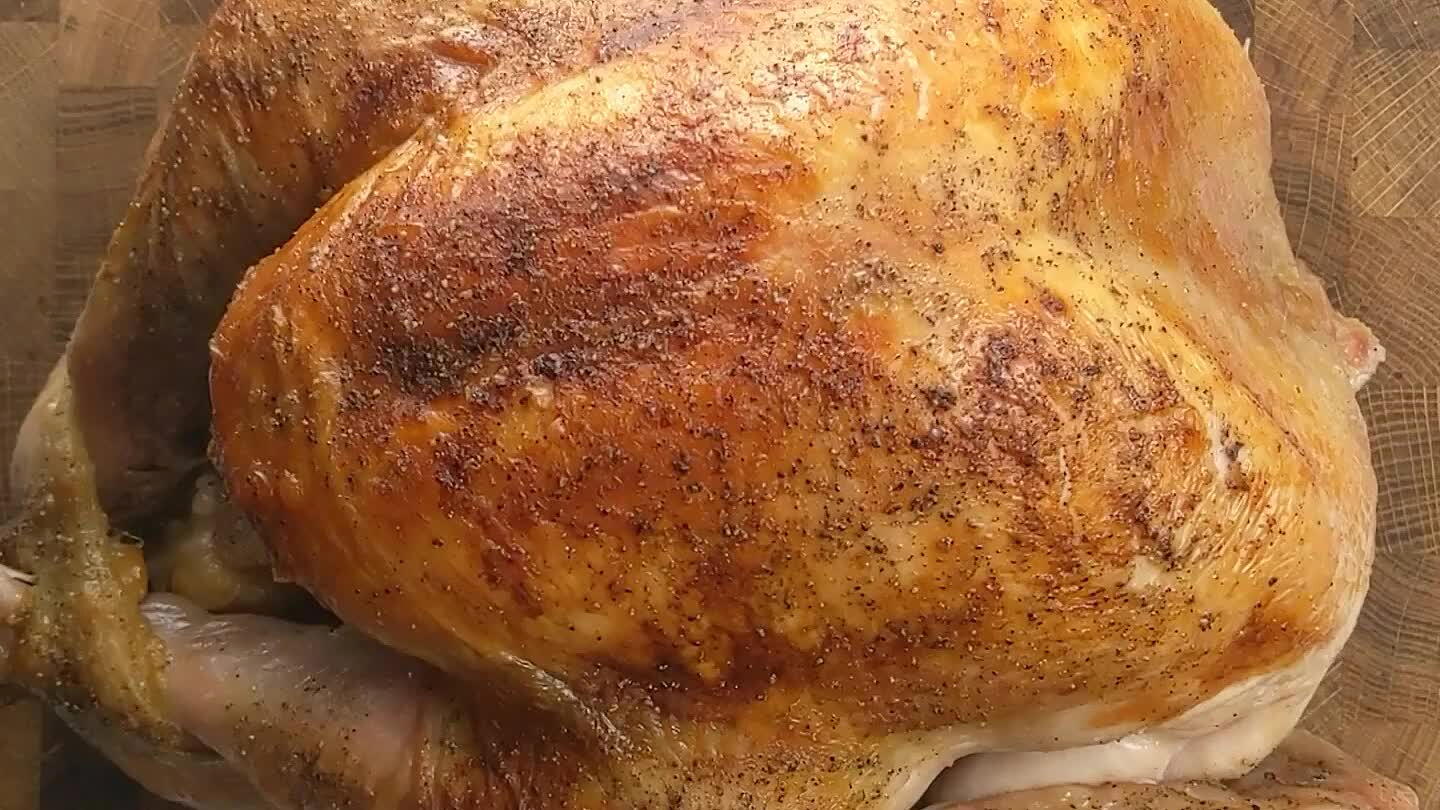
2

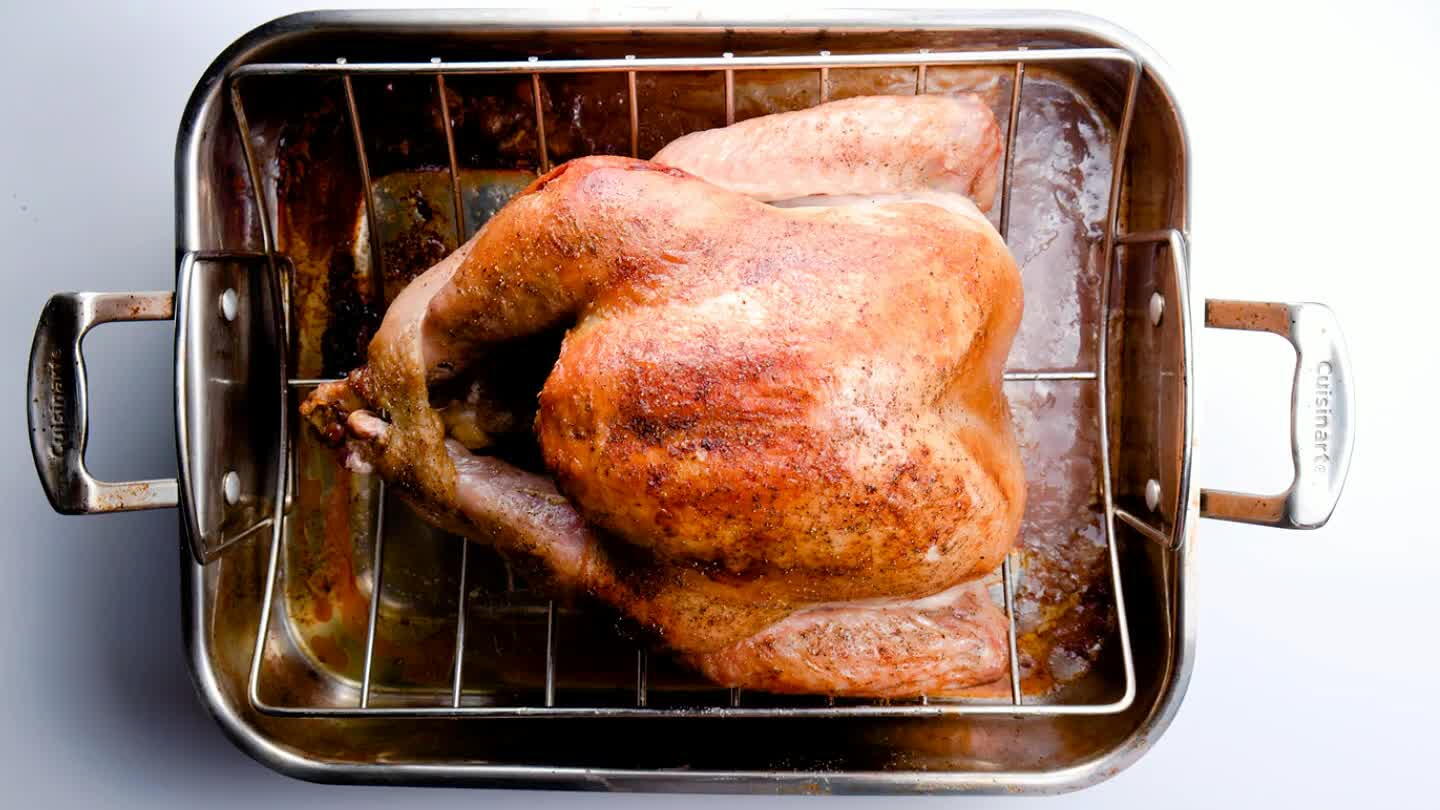
A good rule of thumb is 1 lb of whole turkey for each guest. So a 12 lb turkey should provide for 12. Your turkey will probably be frozen, so you need to get it into the fridge about 4 days before you intend on eating it.
3

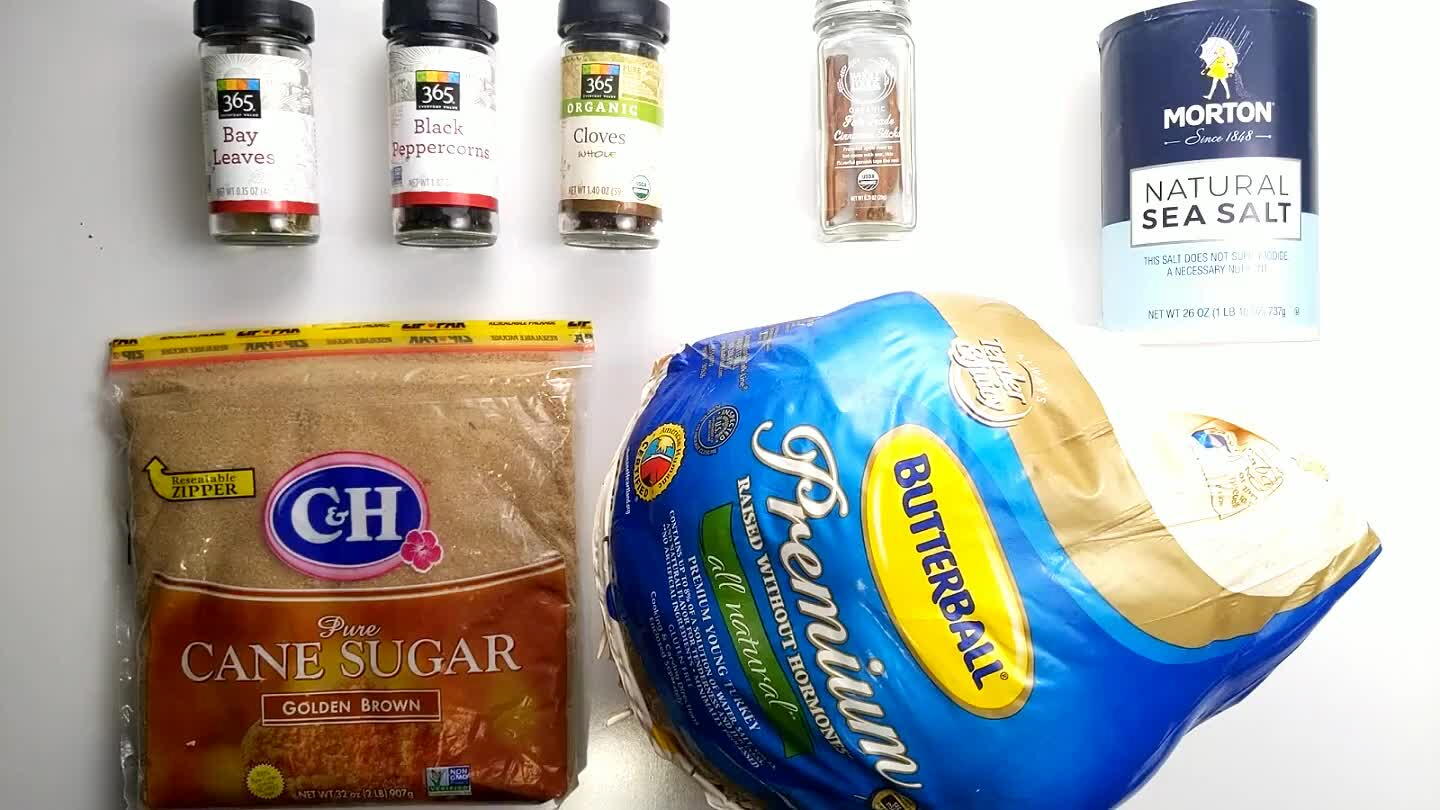
Gather ingredients.
BRINE
1

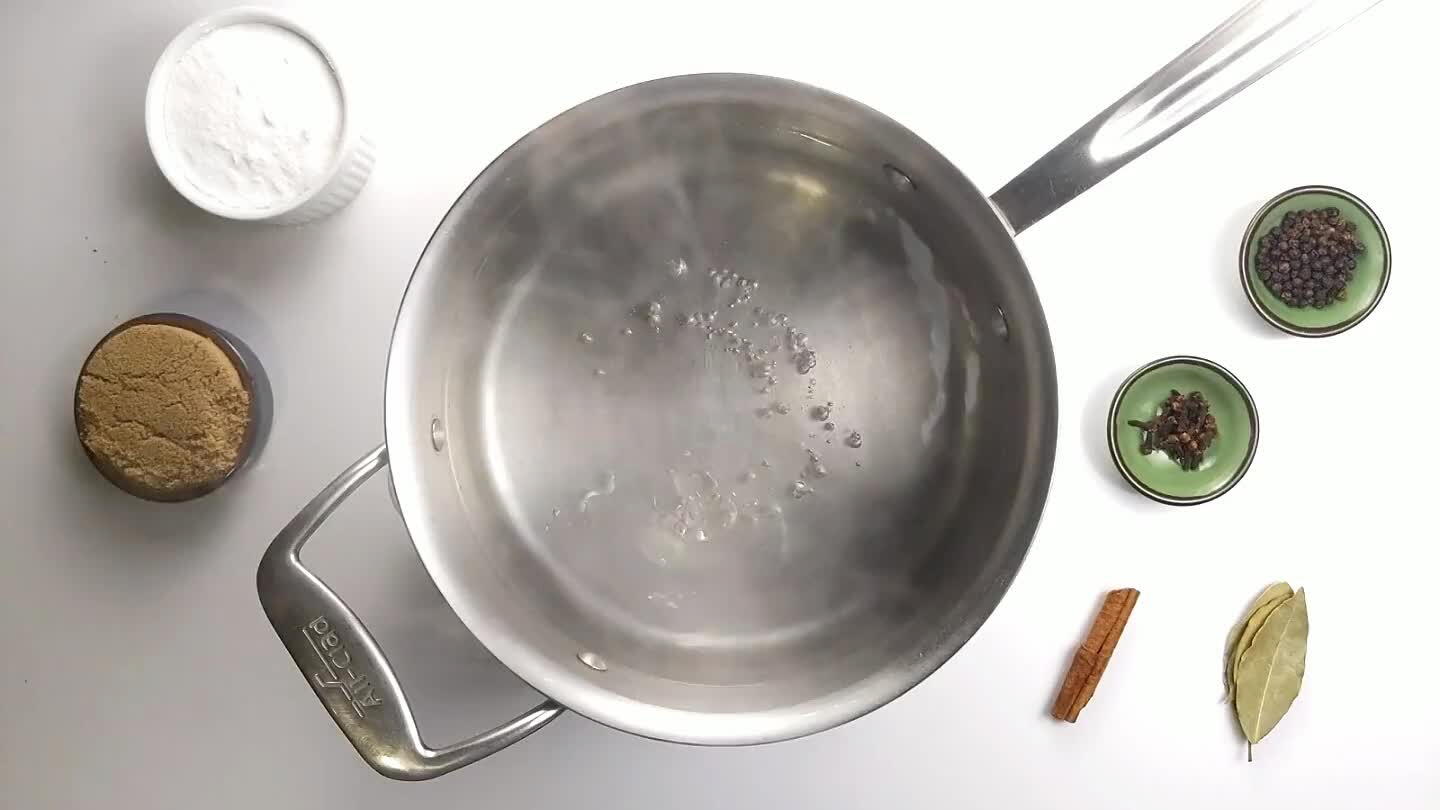
First off, make sure that your turkey isn't already brined. Sometimes they come already brined and it's not always obvious. To make the brine, bring 1/2 of the water to a boil. Add a stick of cinnamon.
2


Toss in 4 bay leaves.
3

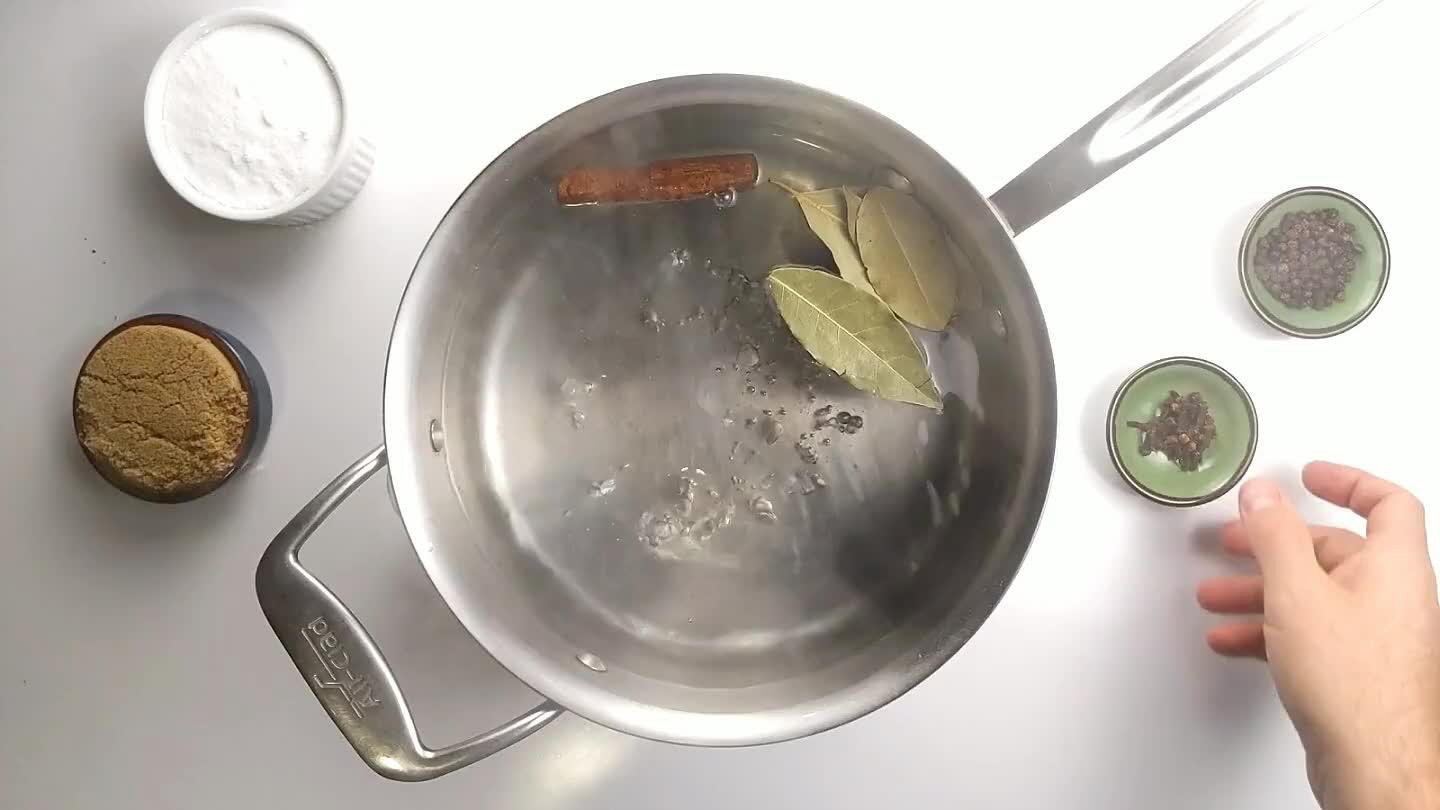
Add the cloves.
4

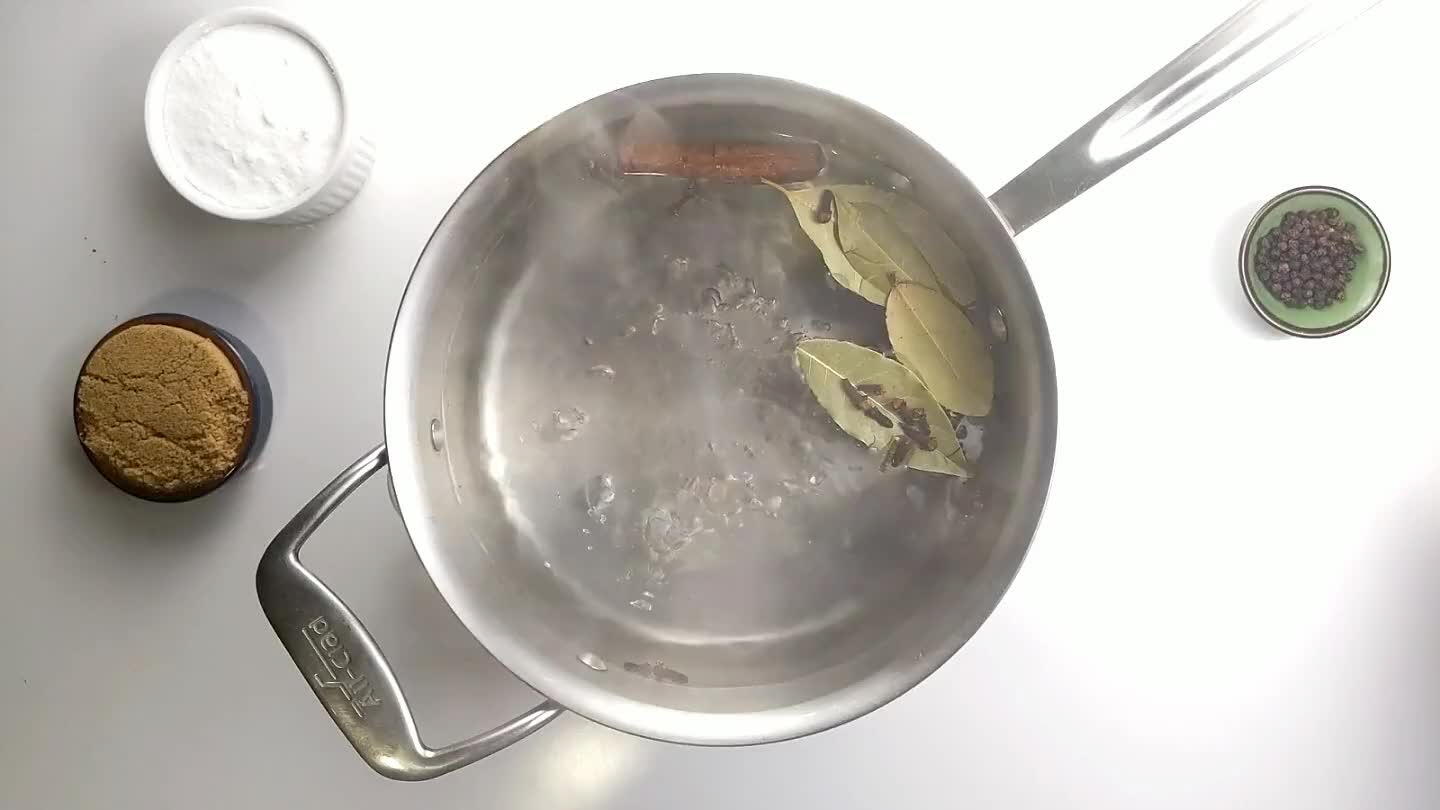
Toss in the black peppercorns.
5


Stir in the salt.
6

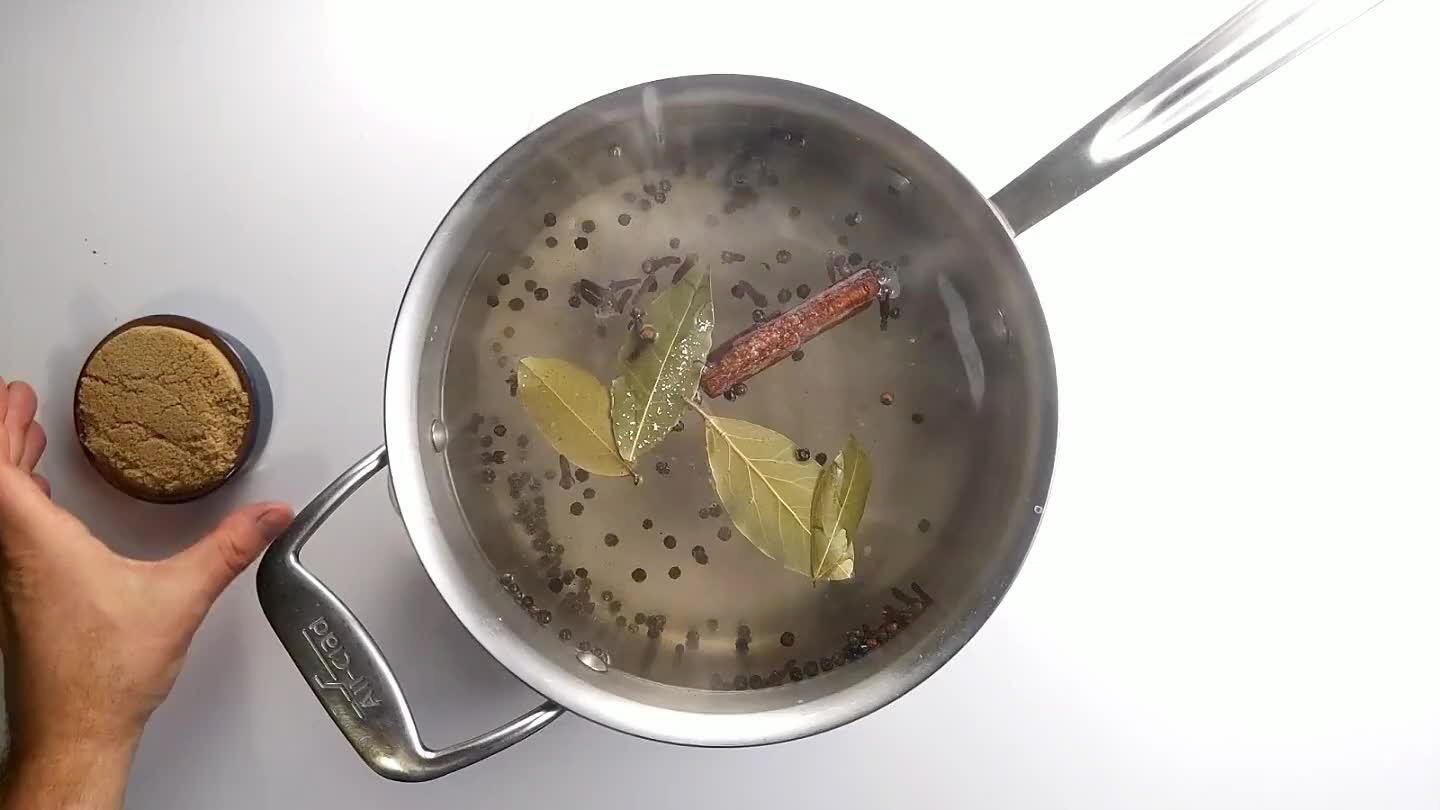
Add the brown sugar. Simmer for 5 minutes or so, then set aside to cool. Don't put this directly in the fridge because it will raise the temperature of your fridge temporarily. Let it cool at room temperature and then refrigerate.
7
Find a container to fit your Turkey
You need a container that is big enough to hold your turkey, but small enough that the bird will stay submerged in brine.
8


This container is way too big.
9

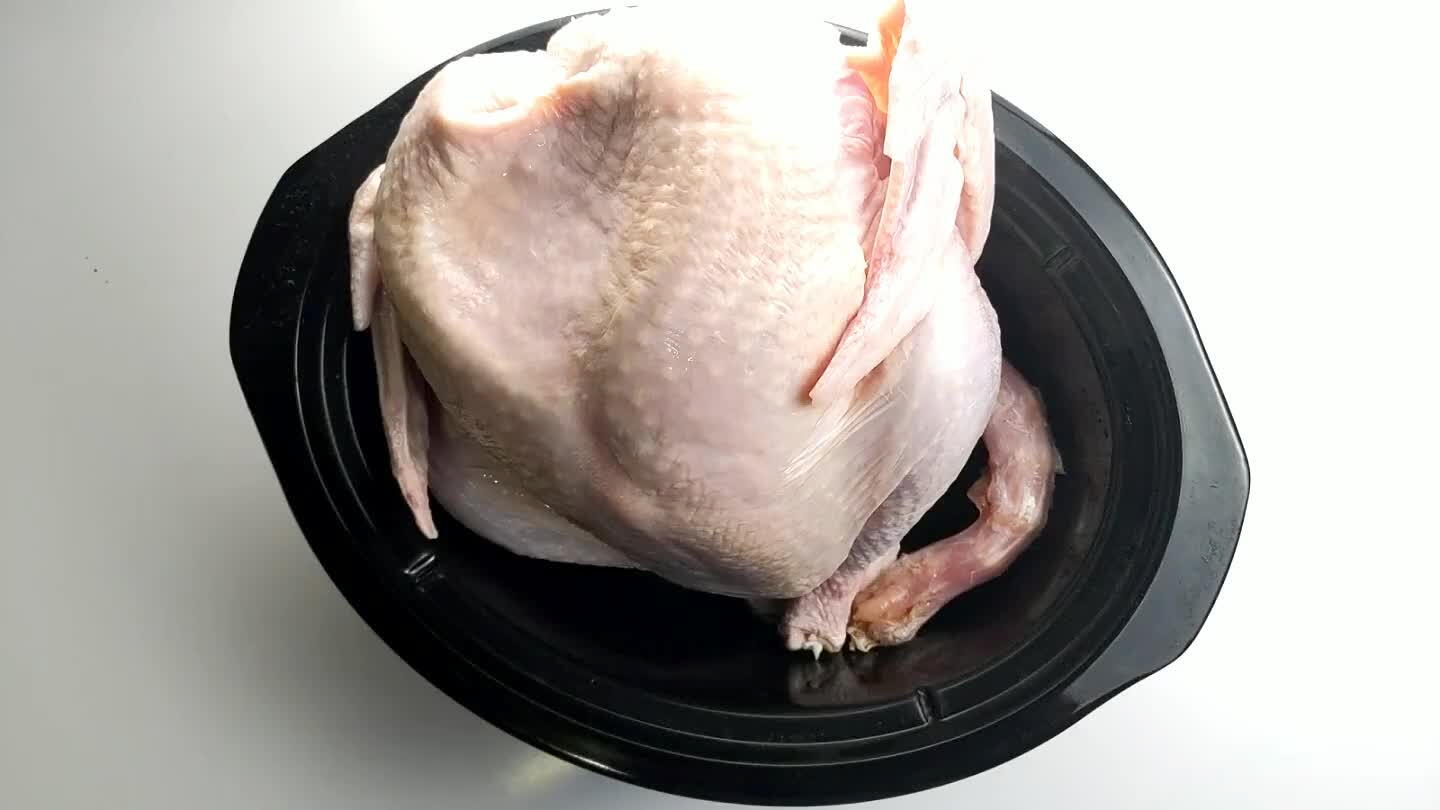
This one is too small.
10

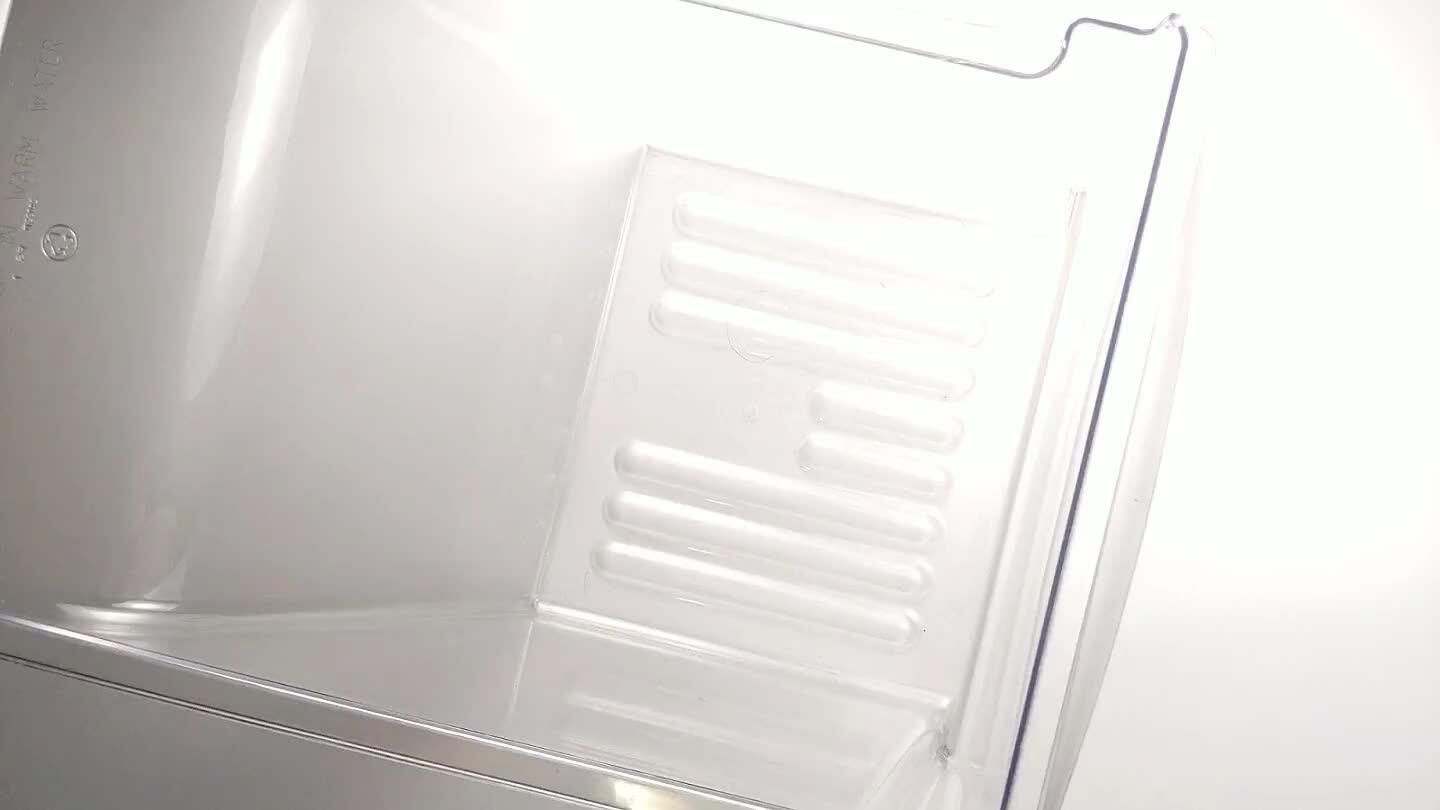
It turns out my refrigerator drawer is just the right size. I scrubbed it out first of course. If you're really having a hard time finding a container that fits, try a garbage bag. However, you should place the garbage bag in a secondary container, just in case it springs a leak.
11

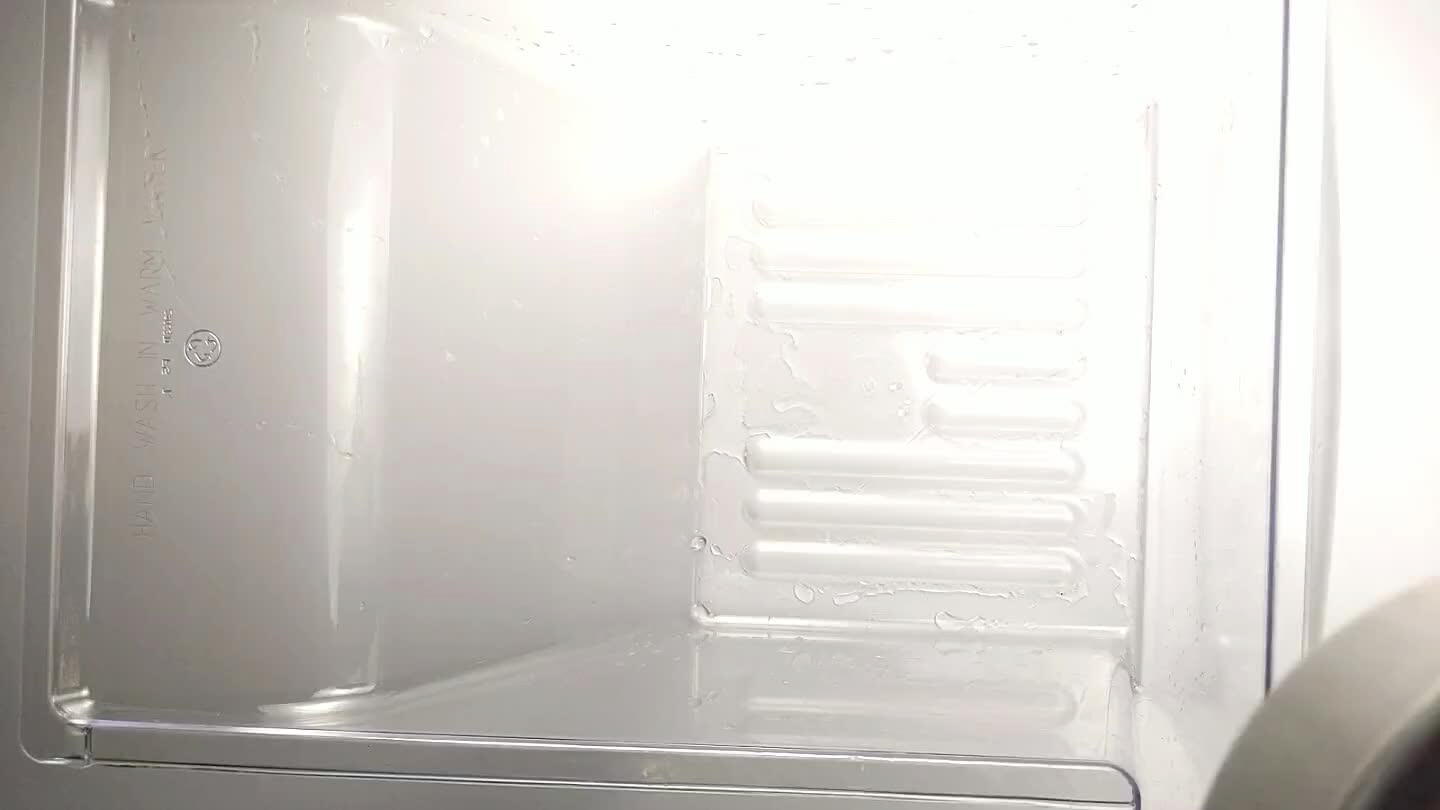
Pour the brine into the container. Leave the herbs and spices in there.
12


Add the rest of the cold water. Make sure the brine is cool, ideally quite cold. Bacteria like warm and wet environments. The salt will definitely slow bacterial growth but it's still important to make sure you're not putting your turkey in a warm bath that might not cool down for several hours.
13

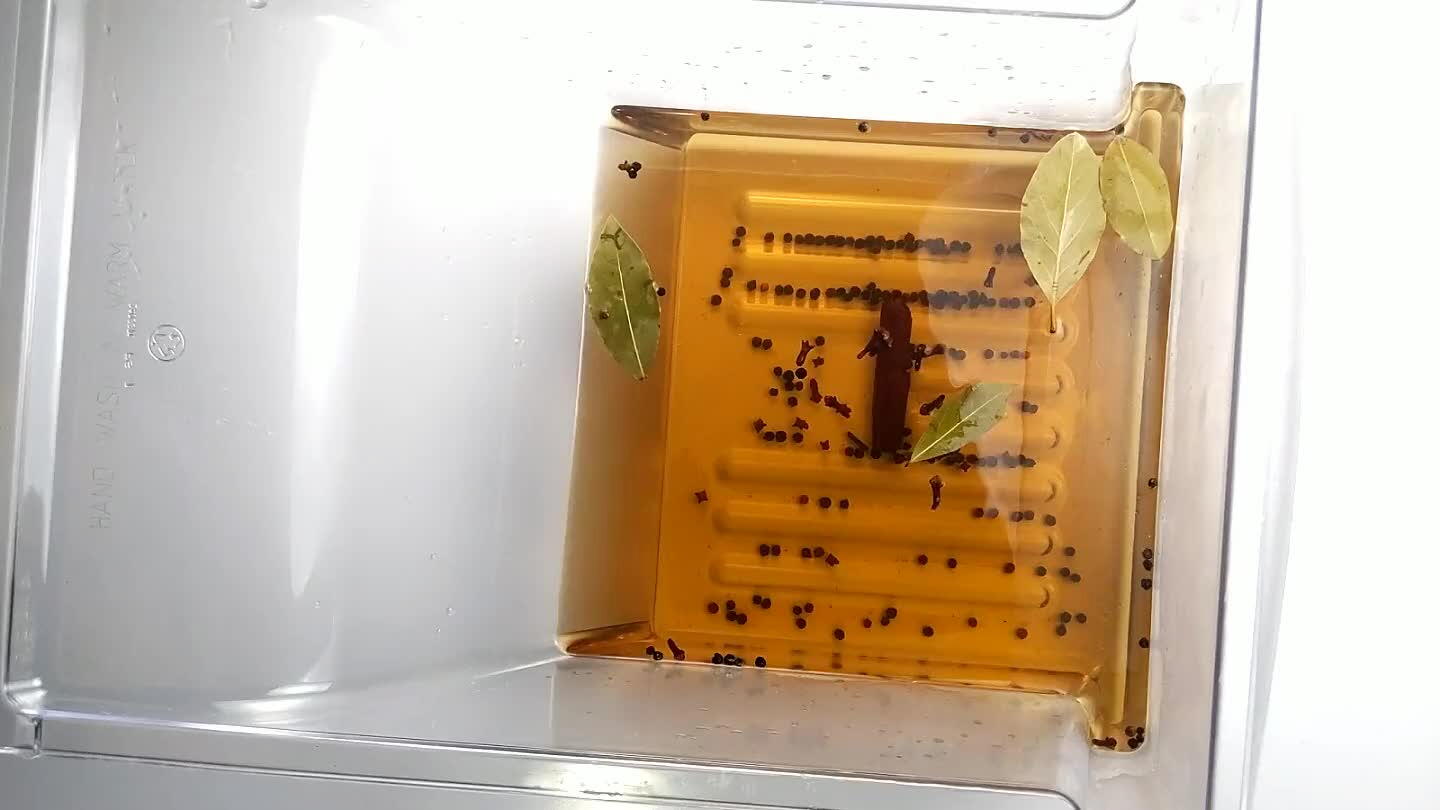
Slide the turkey into the brine with the breast facing downwards.
14

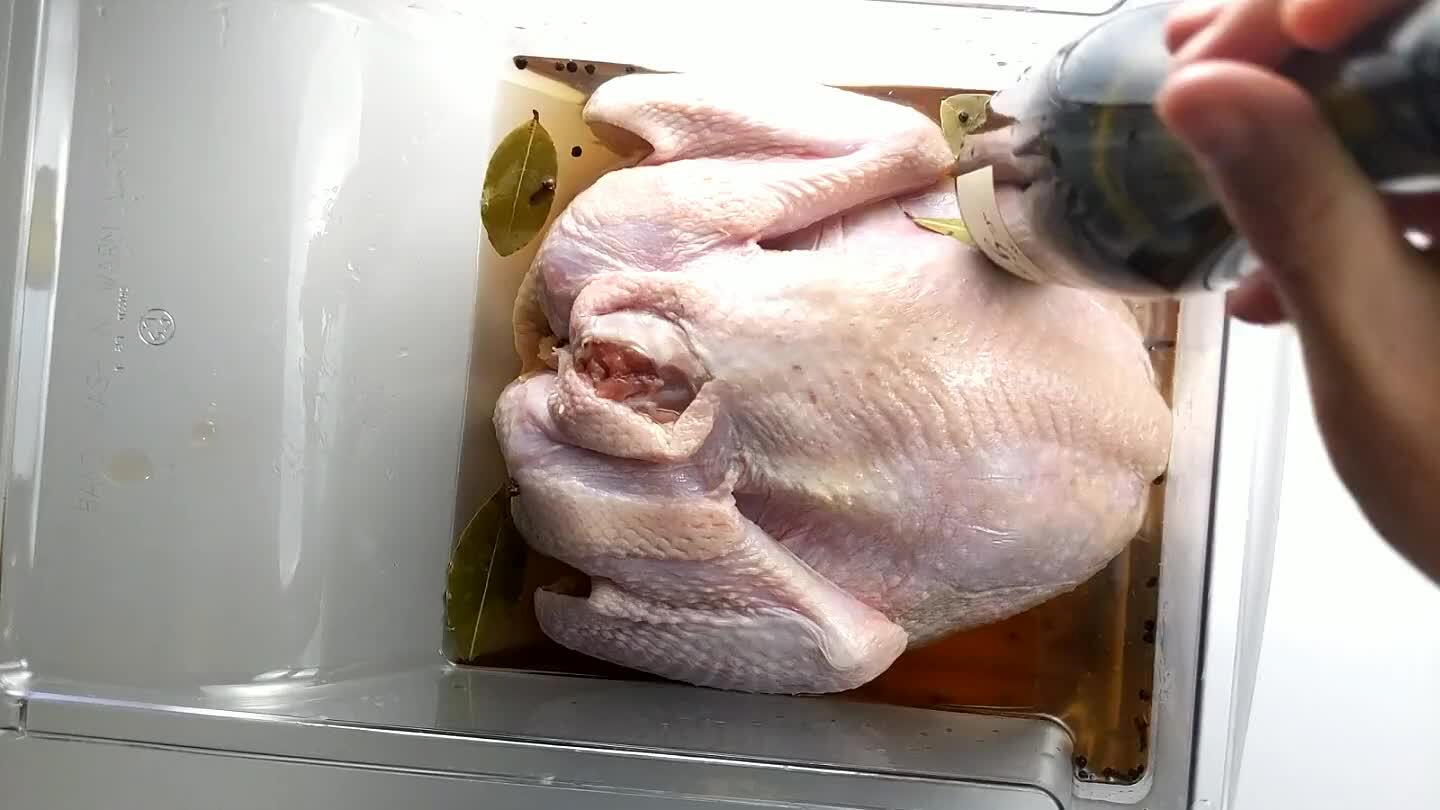
If your turkey isn't fully submerged you can fill a plastic bag or a wine bottle with water and slide it into the brine so that it displaces enough brine to submerge the turkey.
15

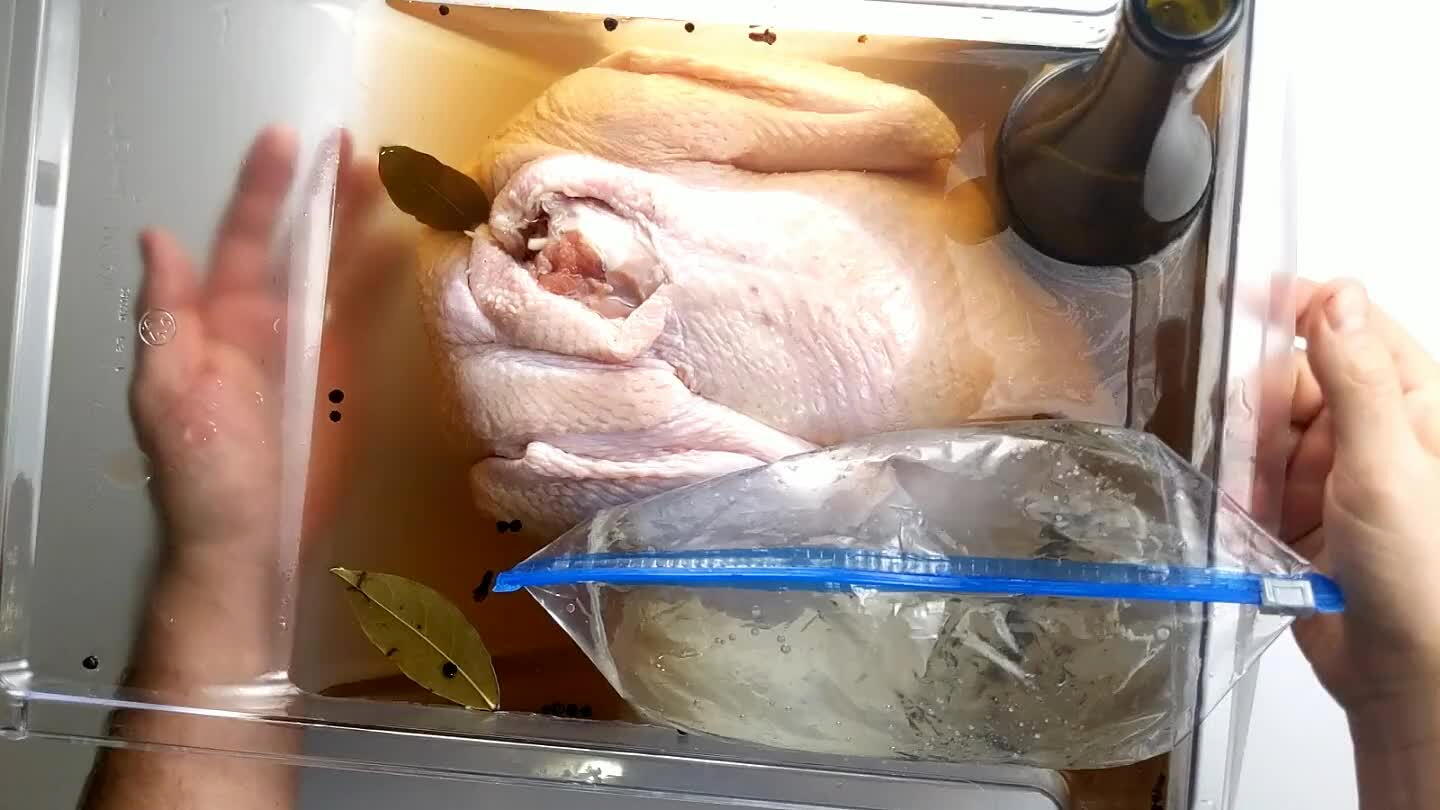
Move the turkey back into the refrigerator. Let it brine overnight. If it goes too long, it will get salty and your turkey might end up with a strange texture.
ROAST
1
Preheat oven to 350°F
Position an oven rack at the bottom of the oven and remove additional racks if necessary to allow room for your turkey in its roasting pan. Preheat oven to 350°F.
2

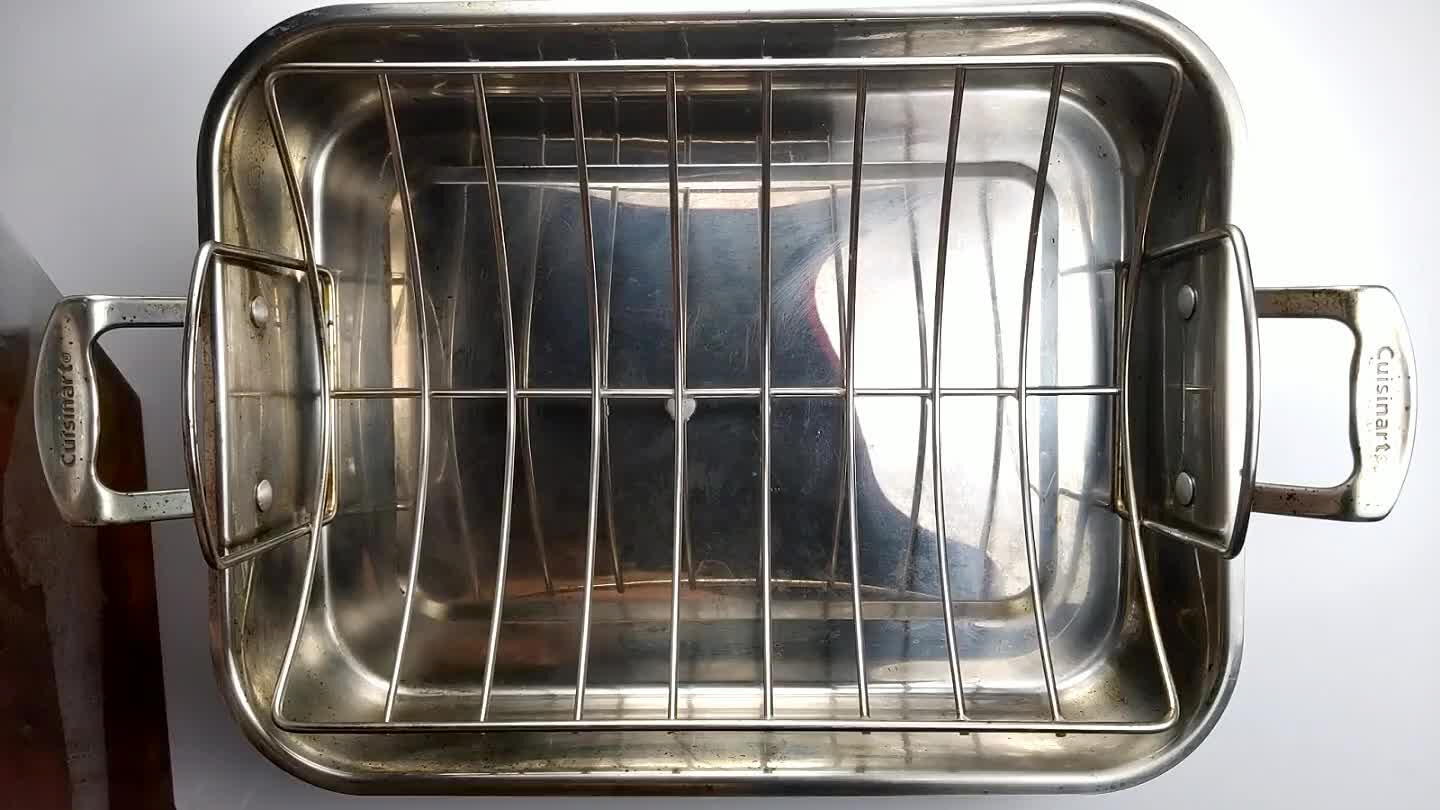
Remove the turkey from the brine. Rinse it and dry it off. Place in a rack on a roasting pan, then let it sit in the fridge for an hour or so to dry out the skin a little. This will improve the texture of the skin.
3

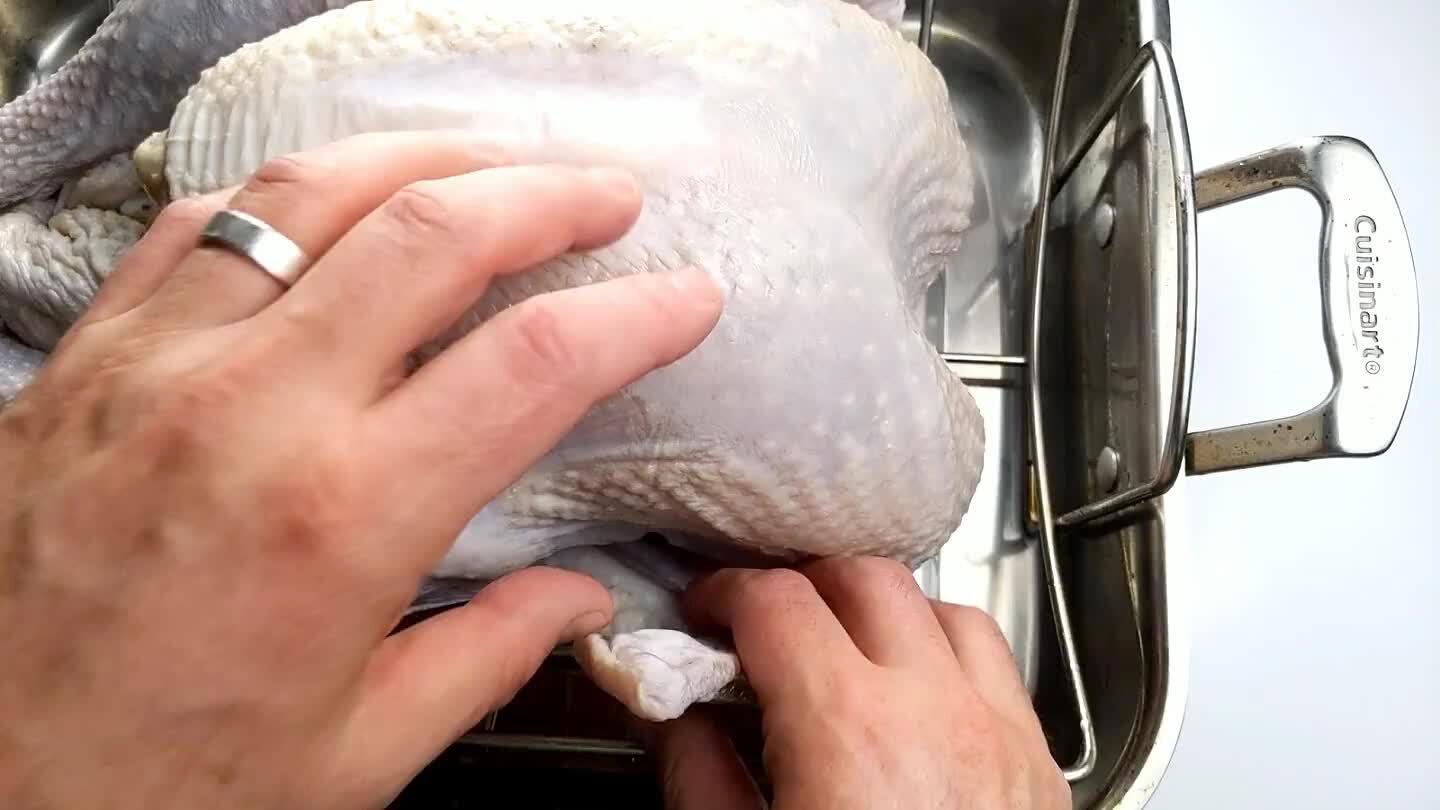
Take the wing tips and move them over the shoulders to pin them behind the back. With the legs, often there's enough extra skin at the bottom of the cavity that you can just slice a small hole in it and tuck the legs through to hold them in place. Otherwise, tie them together with a piece of butcher's twine. Holding the thighs close to the body will help keep them from cooking too much faster than the breast.
4

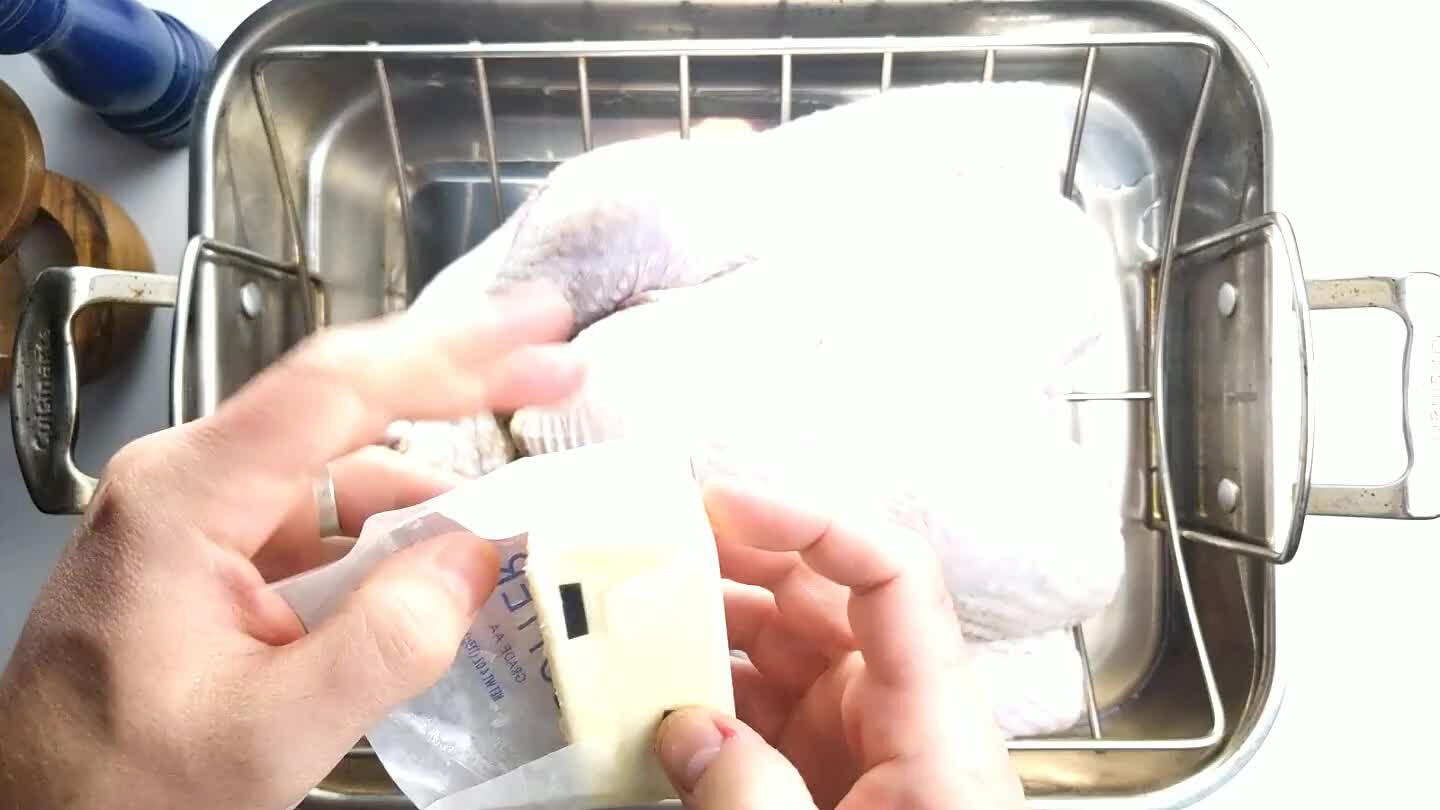
Butter and poultry skin are excellent mates. Smear butter over all of the exposed skin.
5

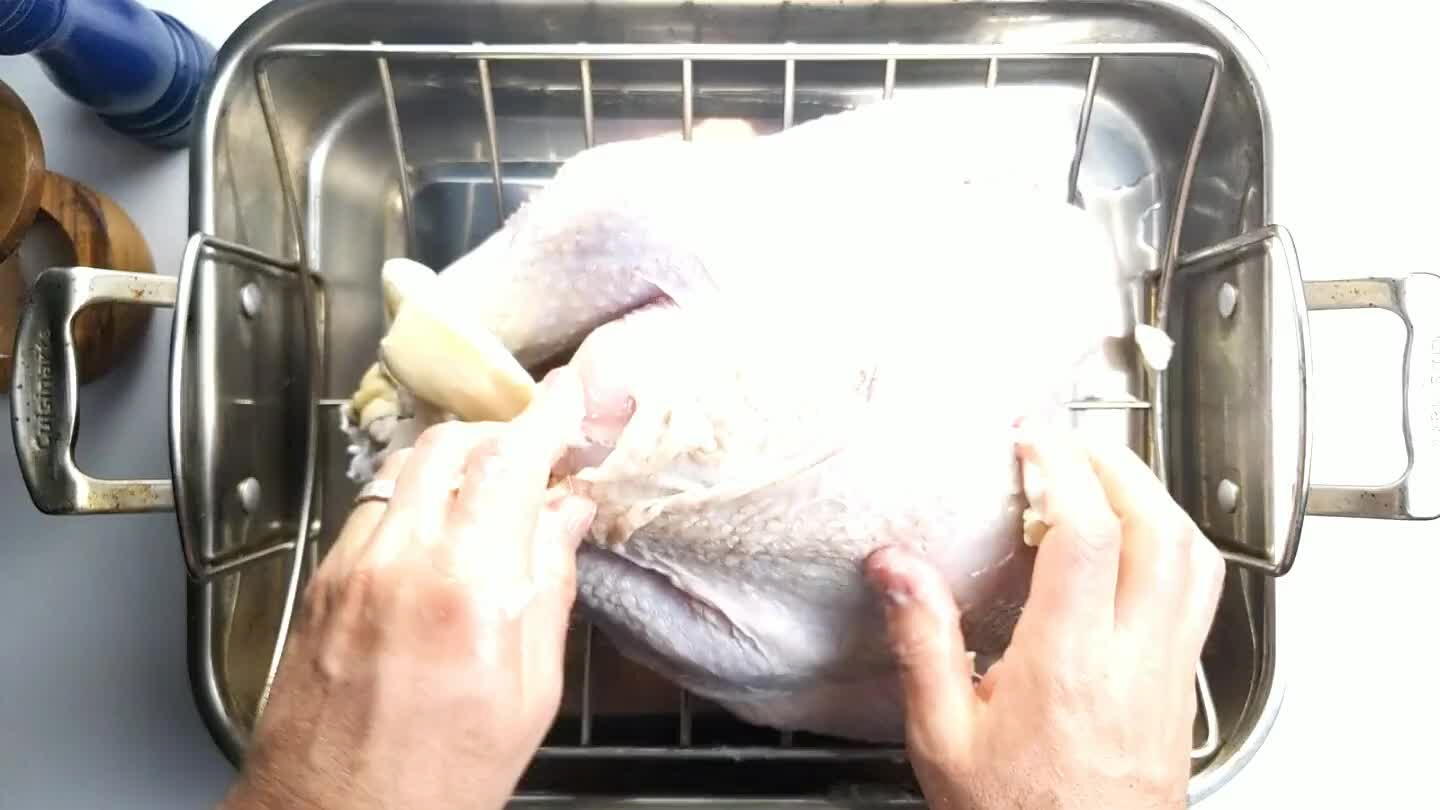
Gently pass your fingers under the skin to separate it from the meat. Slide some slices of butter under the skin of both the thighs and the breast. As the turkey roasts, the butter will soak into the skin and crisp it up.
6

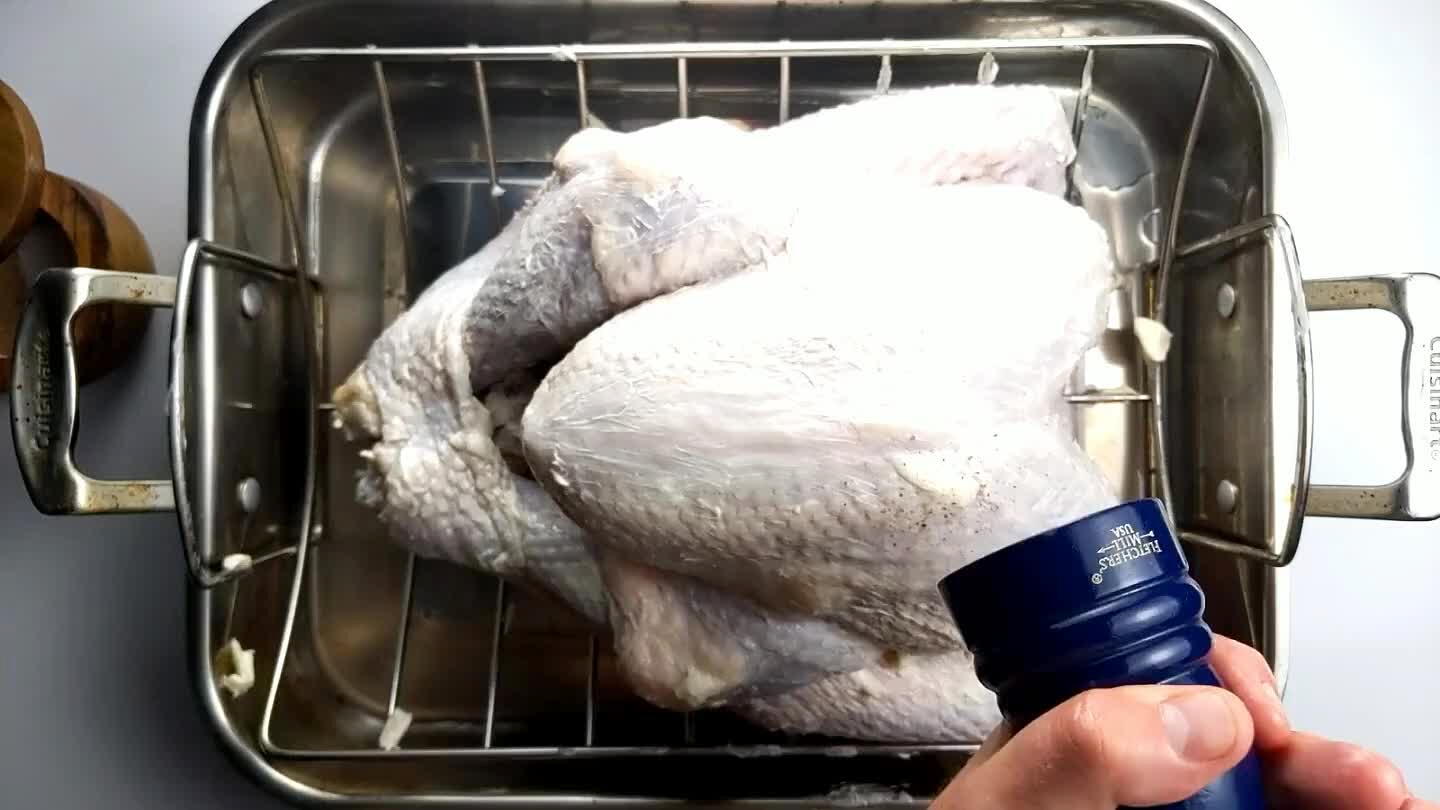
Coat thoroughly with freshly ground black pepper.
7

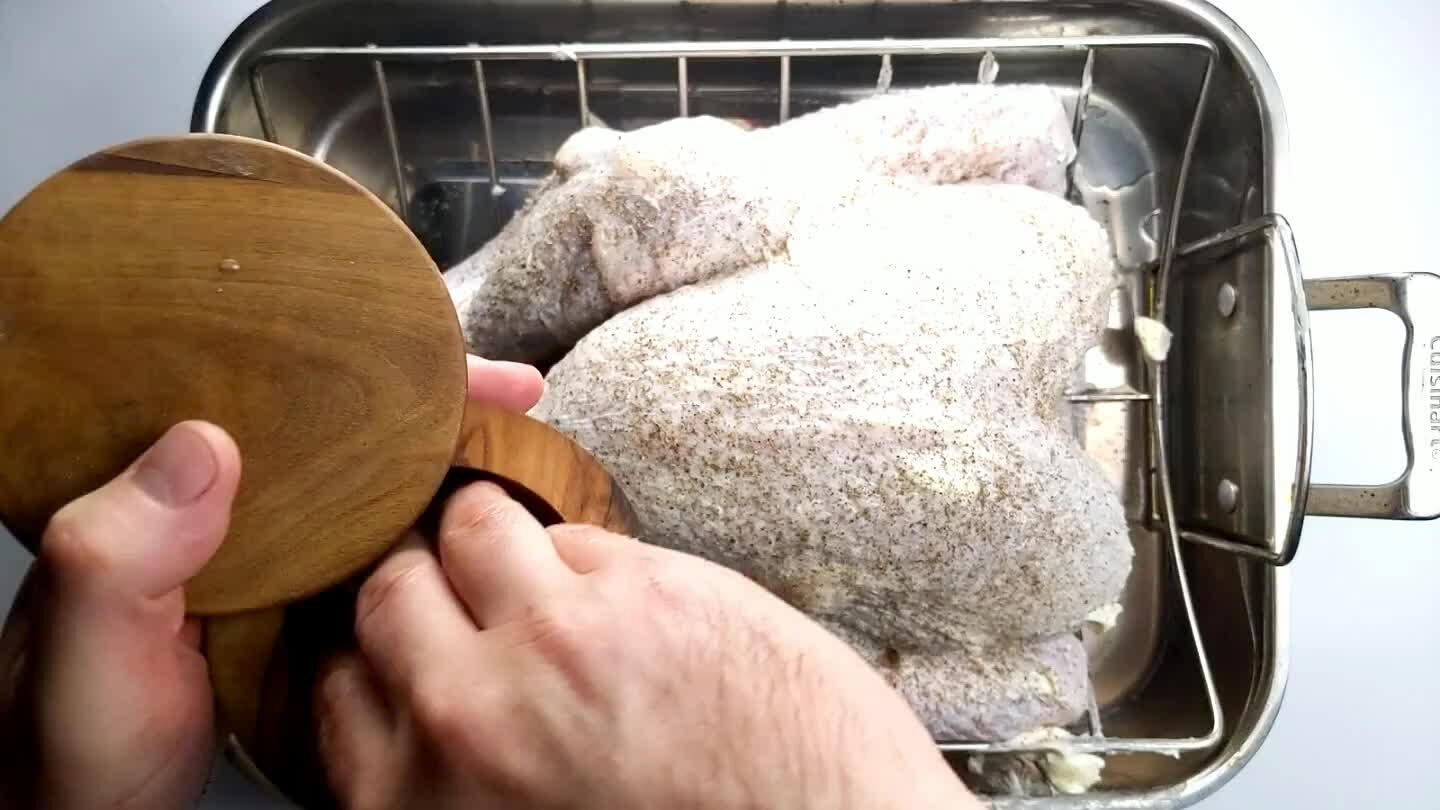
Sprinkle on a light coating of salt.
8

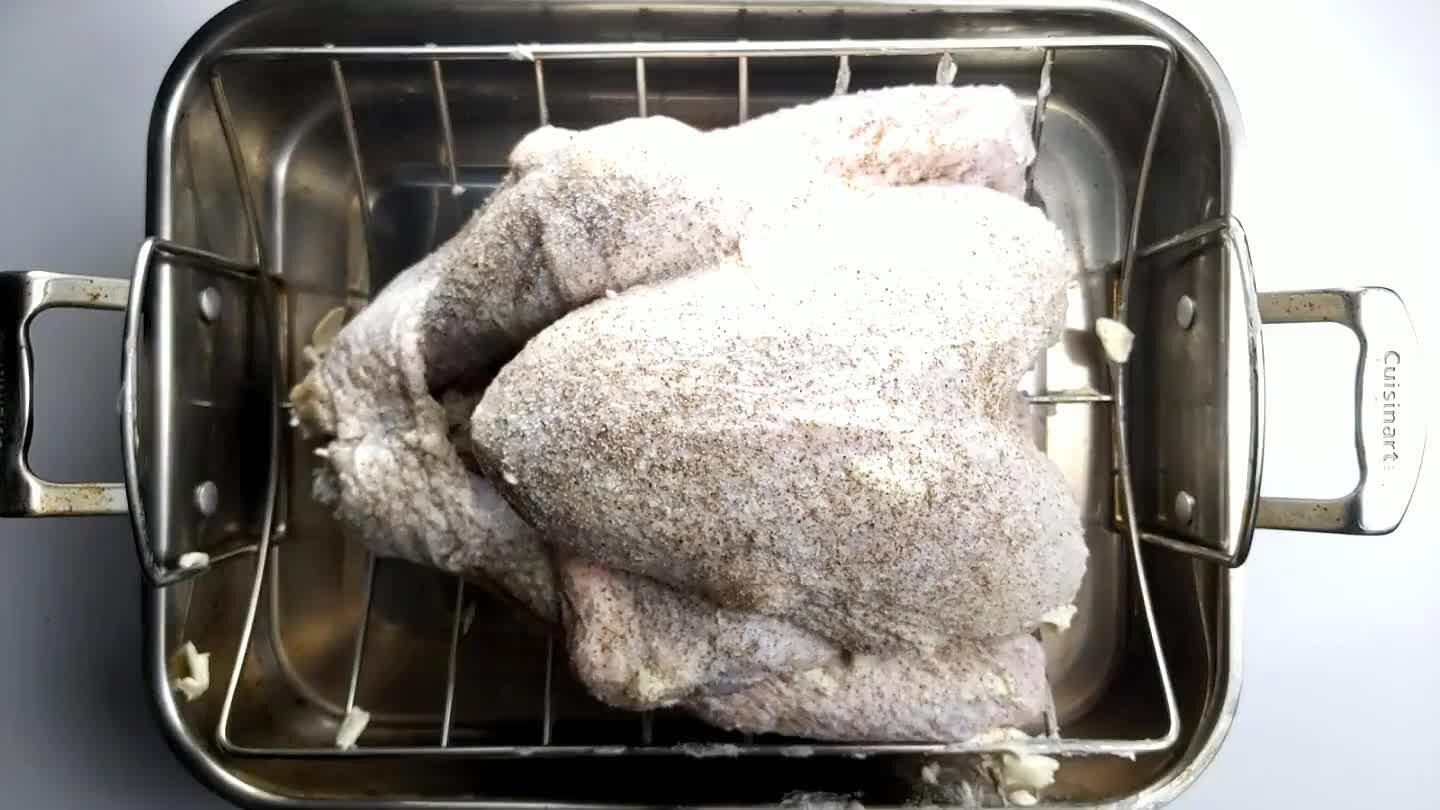
Place a sheet of foil gently over the turkey. Make sure the shiny side is facing inward because the reflection can interfere with your oven's temperature sensor. The foil is intended to keep the skin from overcooking before the turkey is done.
9


Roast to an internal temperature of 161°F. Estimate about 13 minutes per lb. of whole turkey. So a 12 lb. turkey should cook for about 2 1/2 hours. Remove the foil halfway through cooking. Alternatively, try starting the turkey with the breast down and flipping it over after an hour or so in the oven. Check the temperature near what you estimate to be the center of the thickest part of the breast. Check the temperature in several locations for posterity.
10

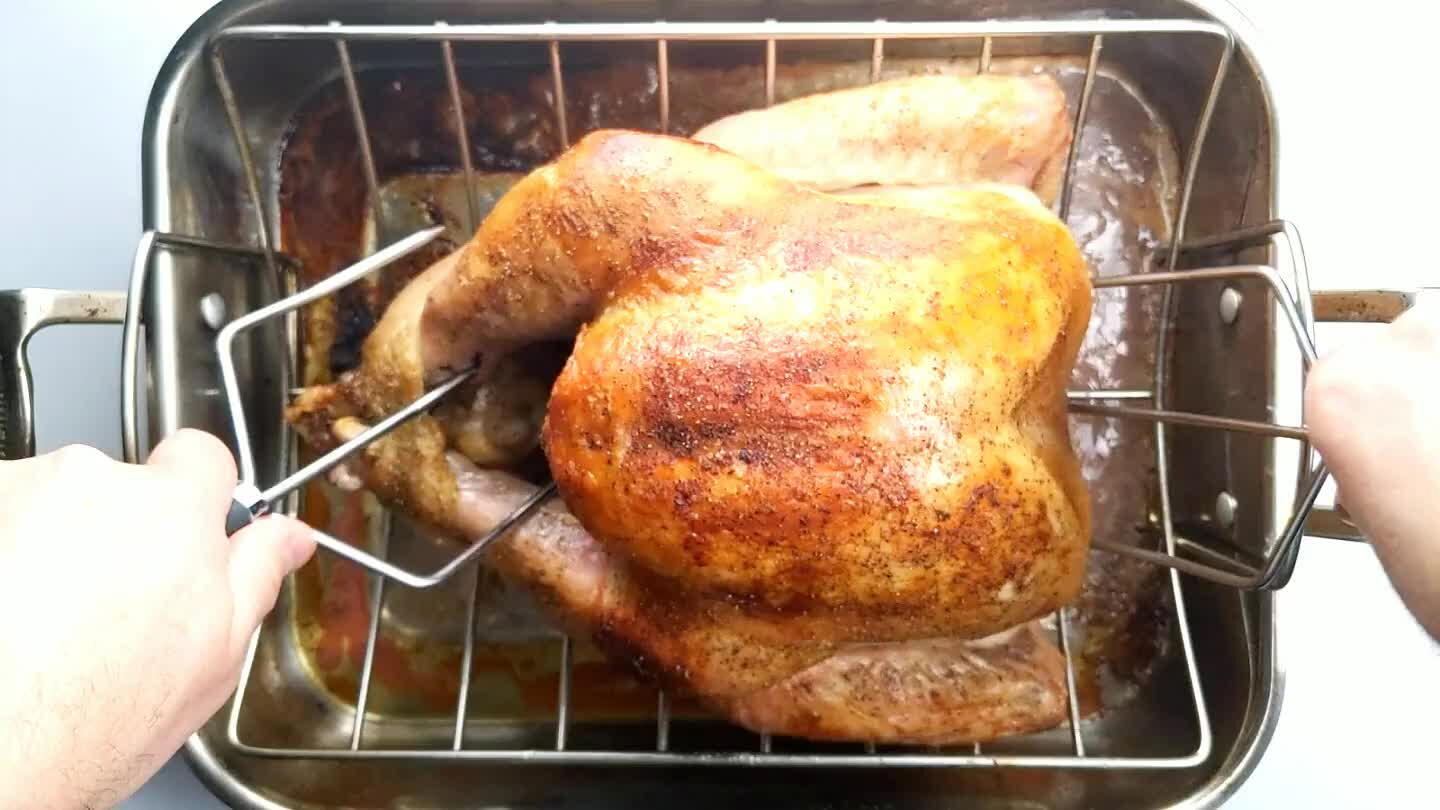
After it comes out of the oven, tilt the turkey to let some of the juices run from the cavity, then transfer it to a cutting board. It's going to release a lot of juice as you carve it, so make sure you have something to catch the juices. Let it rest for 15-20 minutes.
11

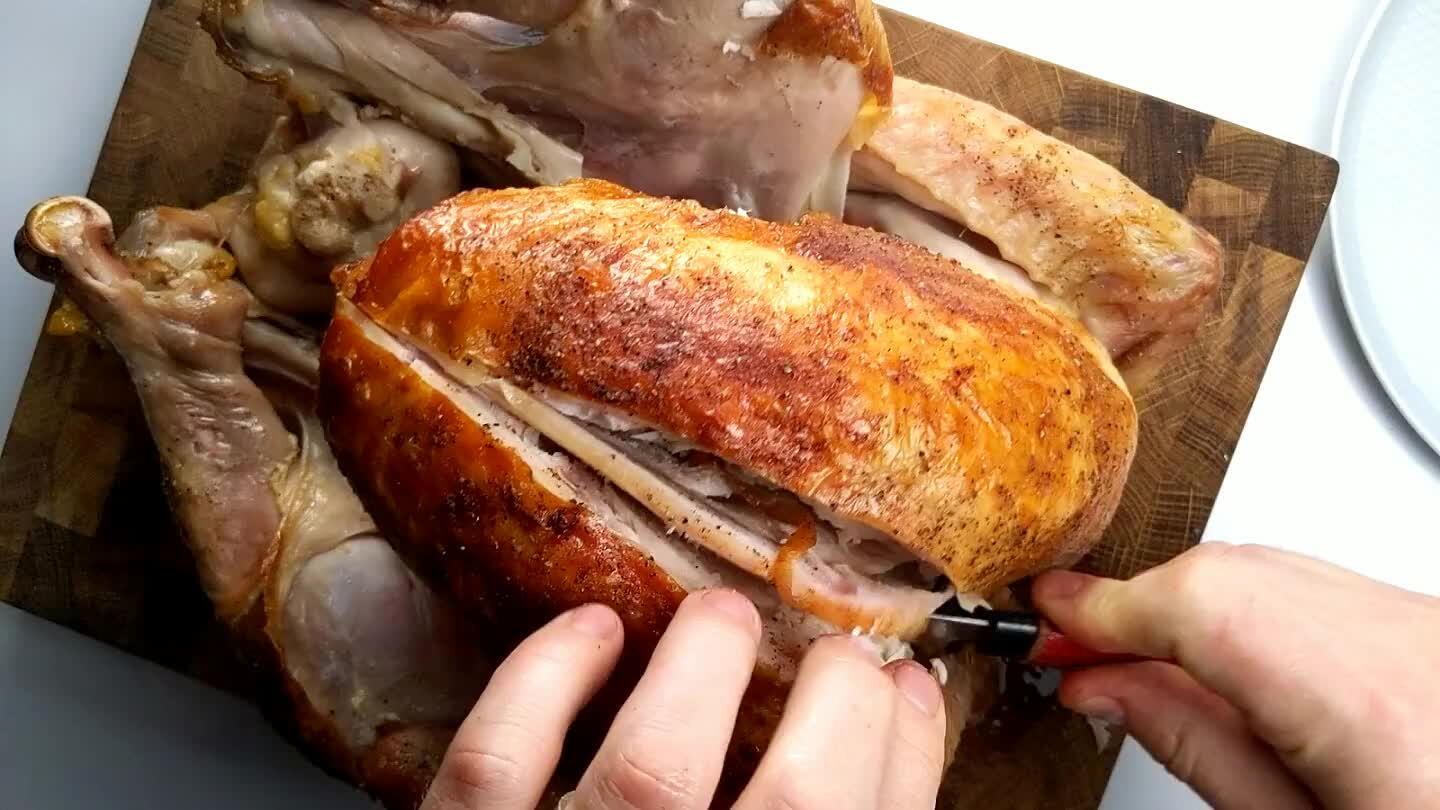
If you're not sure about your turkey carving technique, check out the attached recipe to brush up.
12

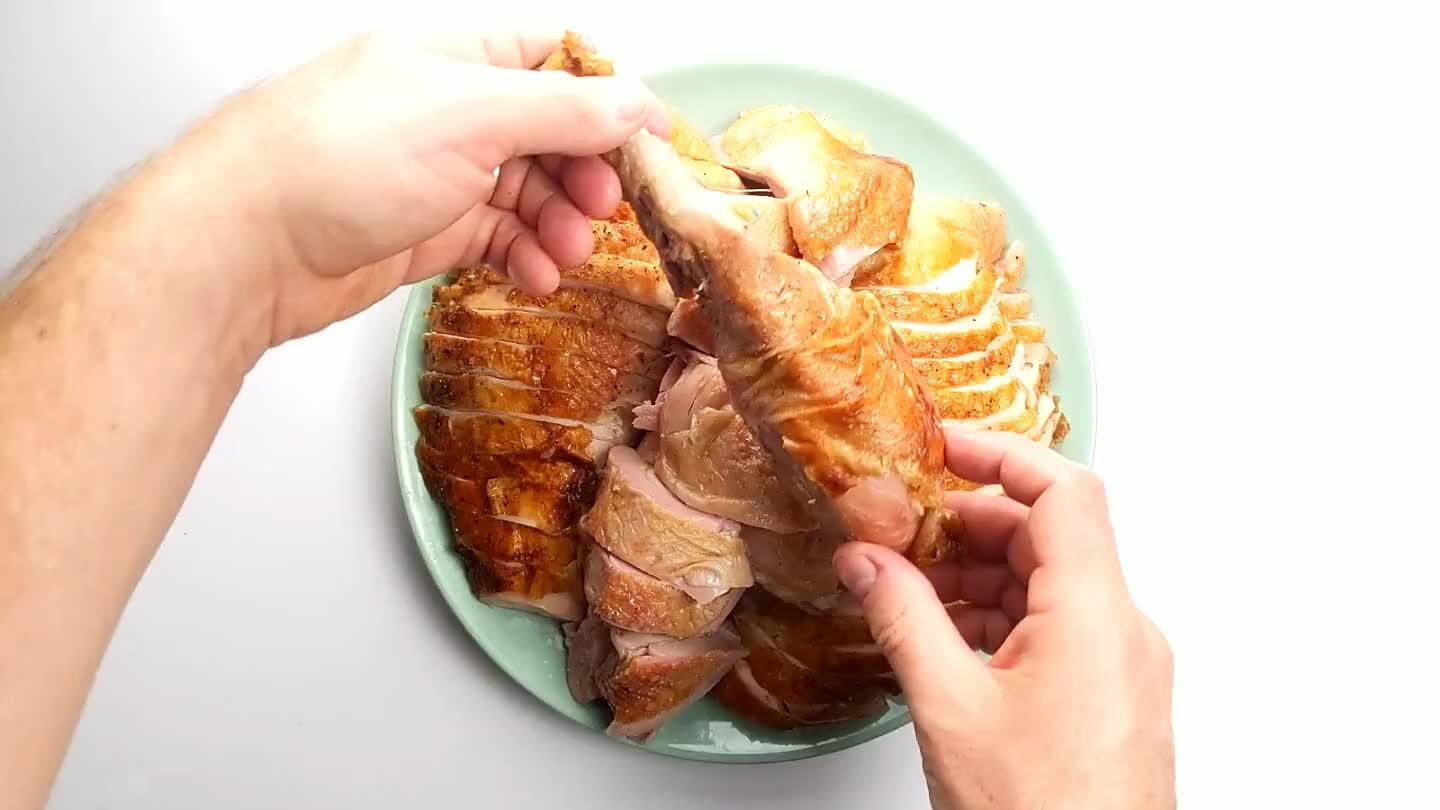
Arrange the turkey neatly on a platter to serve. I like to put the thigh meat in the middle and surround it with the neatly sliced breast meat, then perch the drumsticks and wings on top.
13






How to Brine a Turkey
A brine is a great way to improve flavor and texture when cooking a whole turkey.